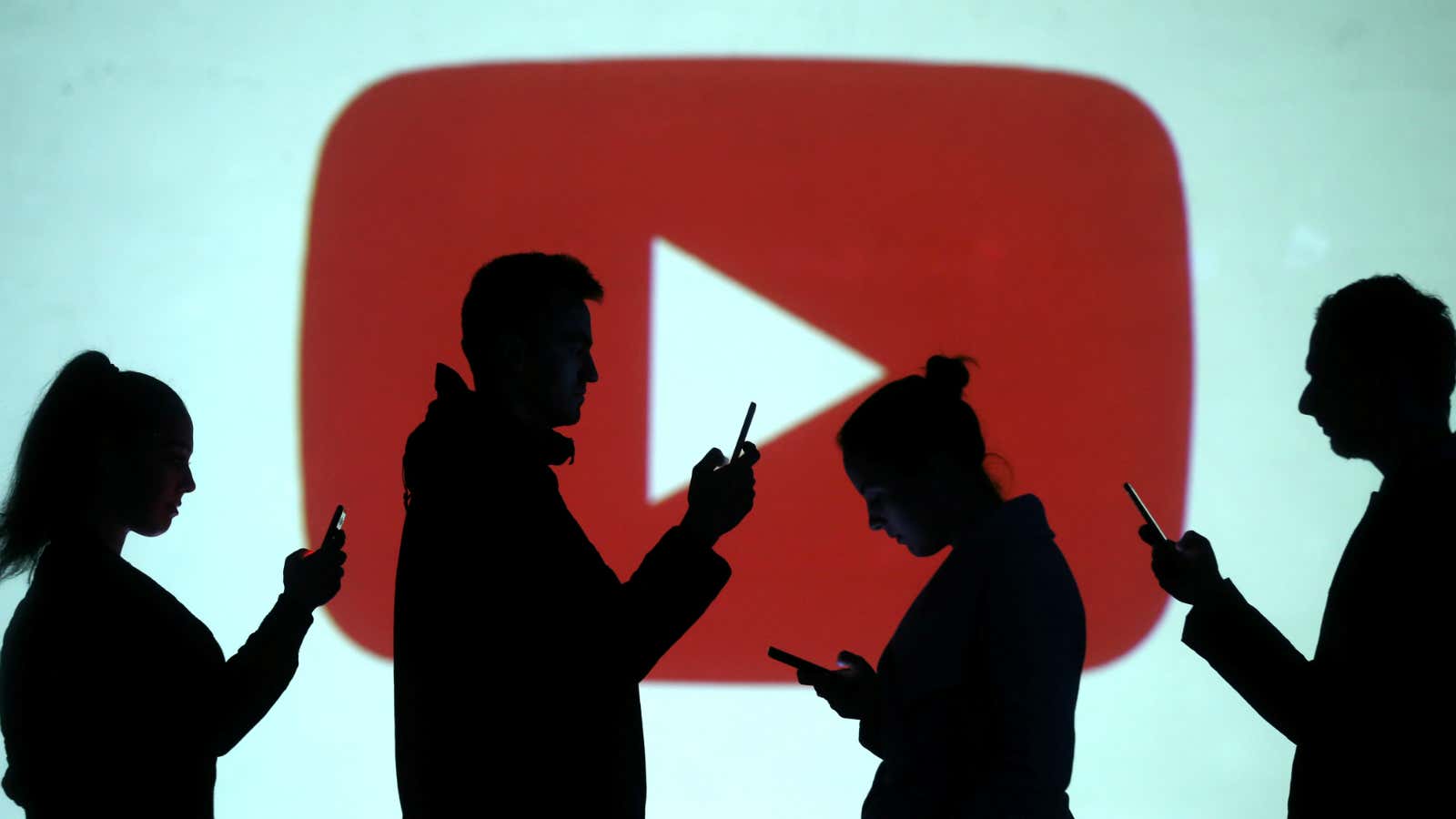YouTube is an inseparable part of online life for up to 225 million Indians.
This is around 80% of the country’s total internet population—a clear sign of the substantial reach that the Google-owned video-sharing platform has achieved in India within 10 years.
What’s better is that YouTube remains Indians’ first love even amidst an explosion of online video consumption that has attracted a slew of over-the-top players to the market, including prominent global ones.
Besides watching music videos and movies, thousands are also uploading local language content as varied as football lessons from Punjab, cooking recipes from the hinterland, and home decor trends from metro cities.
To tap into this opportunity, the company has brought to India its global “pop-up spaces” initiative, under which content-creators can come and get production-related assistance. For three days beginning Oct. 05, YouTube opened a pop-up space in Gurugram, near Delhi. This was its second pop-up space after a similar initiative was launched in Hyderabad last year.
Quartz spoke to Marc Lefkowitz, YouTube’s head of creator and artist development for the Asia-Pacific region (APAC), about the company’s efforts to assist more content-creators here.
Edited excerpts:
India’s internet user base is exploding. How has that changed things for YouTube?
We make sure we are staffed appropriately to catch up on the growth. We are seeing a huge shift in the type of content that is popular on the platform. Roughly 95% of the content consumed is in native Indian languages and that is something we hadn’t seen earlier. Back in 2014, it was all Hindi and English.
So now, we are starting to see a lot of new content from regional dialects come onboard and also a change in the type of content that gets uploaded. There are rural cooking shows, for instance—we don’t see that type of content in some of the other regions.
How do you make sure you get more content creators onboard?
Among other things, we have permanent spaces in Mumbai and Tokyo to engage with content creators. We wanted a way to replicate that with a smaller footprint in more cities. So this is why we are adding “pop-up spaces.” We have a model for these spaces to provide production help. It’s about having sets to create videos and product managers to explain our strategy. We reach out to existing content creators by offering them a space to produce their content. We also have different initiatives depending on the type of market. And then, we work with local teams and do outreach to various top creators in all the regions.
How does YouTube scout for talent in a competitive environment?
Since we are a platform and not a pure media company, we will always be that democratised space where everyone can come and broadcast themselves. This year we did create some original series (featuring musician AR Rahman), but it is ad-supported. We do have programmes in the US that work on getting social media stars to the platform, so we work with Instagram stars, for instance. We haven’t run those programmes in APAC yet.
Is there a difference in the content being created and consumed in India versus that in other APAC markets?
Yes. North Asia, for instance, is all about K-Pop in Korea or animation channels in Japan, as well as some of the local music there. From China, we have a lot of tech content coming.
But if I see south Asia, I think the region mimics India a lot. We are seeing the world of cooking get big in Thailand and Vietnam now, and we see different languages come on the platform from some of these countries. So we see India leading these markets.
Besides general entertainment, what are people uploading?
Some categories seeing growth are wellness and fitness, and adult learning and tutorials. People feel they can relate to online content creators more than to professors. Then there is also this language boom we see in India, no other market comes close to this kind of lingual diversity.
So how will Google continue to capture such content creators going forward?
We can go a lot deeper. I truly believe we are just at the beginning of growth in India and we will see bigger investments coming from our company. We have to ensure that we support all the different languages. That will naturally flow into how we think about and how we plan our next set of platforms.
